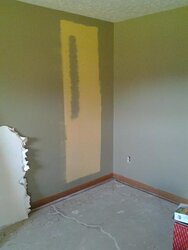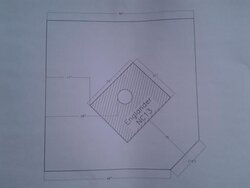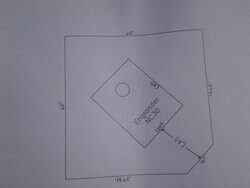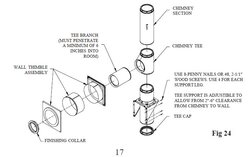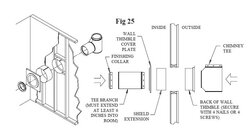Hi everybody, I'm new the the forum and I have a few questions. I've been doing some research on added a wood stove of my split level home, mostly to use a secondary heat source to offset the propane bill.
My biggest question is regaurding the construction of my corner area raised hearth. I plan to run an Englander NC13, as my total house size is 1800 sq. ft. and I primarily just want to run the wood stove while down in the "mancave" watching TV and to offset the propane bill...down the road, I may possibly consider an NC30 or something similar, however right now, I think the NC13 will be plenty for me & the family. So, all that considered, I want to build the hearth to accomidate either one from the start.
Biggest confusing road block I have comes down to proper insulating the area for the R2.0 required by the NC13. Since my flooring underneath the metal framework is already concrete & noncombustable, is it necessary to make sure I am exactly R2.0? Or can I frame this area in like the link below and do this exact setup (3.5" airspace, 2 sheets Hardieboard, plus stonework)? I keep reading about people using Micore300 & such items, but usually this is because they have a wood floor underneath...mine is concrete. I could save a ton of money (as most of you know) by not using this Micore300 material if I don't really need it.
I want to build the my hearth to pretty much look exactly like this one ( https://www.hearth.com/econtent/index.php/articles/stove_hearth_construction ), except I am going to continue the stone work up to the ceiling and the pipe will be going out the sidewall of my house. The stove will be in the lower "sub" level of the split level, not in the basement. Since I am going to be going out of the sidewall, do I have to frame in some sort of a "firebox" inside the wall (along with running the proper duct work/cleanout of course)?
There's a lot of info in my first post, but I have a lot going through my mind with this setup, as I'm sure you all did too when you were at this stage of the game. Anybody with this setup or that has any tips of me would be greatly appreciated. I can post pictures if needed. Thanks!
My biggest question is regaurding the construction of my corner area raised hearth. I plan to run an Englander NC13, as my total house size is 1800 sq. ft. and I primarily just want to run the wood stove while down in the "mancave" watching TV and to offset the propane bill...down the road, I may possibly consider an NC30 or something similar, however right now, I think the NC13 will be plenty for me & the family. So, all that considered, I want to build the hearth to accomidate either one from the start.
Biggest confusing road block I have comes down to proper insulating the area for the R2.0 required by the NC13. Since my flooring underneath the metal framework is already concrete & noncombustable, is it necessary to make sure I am exactly R2.0? Or can I frame this area in like the link below and do this exact setup (3.5" airspace, 2 sheets Hardieboard, plus stonework)? I keep reading about people using Micore300 & such items, but usually this is because they have a wood floor underneath...mine is concrete. I could save a ton of money (as most of you know) by not using this Micore300 material if I don't really need it.
I want to build the my hearth to pretty much look exactly like this one ( https://www.hearth.com/econtent/index.php/articles/stove_hearth_construction ), except I am going to continue the stone work up to the ceiling and the pipe will be going out the sidewall of my house. The stove will be in the lower "sub" level of the split level, not in the basement. Since I am going to be going out of the sidewall, do I have to frame in some sort of a "firebox" inside the wall (along with running the proper duct work/cleanout of course)?
There's a lot of info in my first post, but I have a lot going through my mind with this setup, as I'm sure you all did too when you were at this stage of the game. Anybody with this setup or that has any tips of me would be greatly appreciated. I can post pictures if needed. Thanks!


